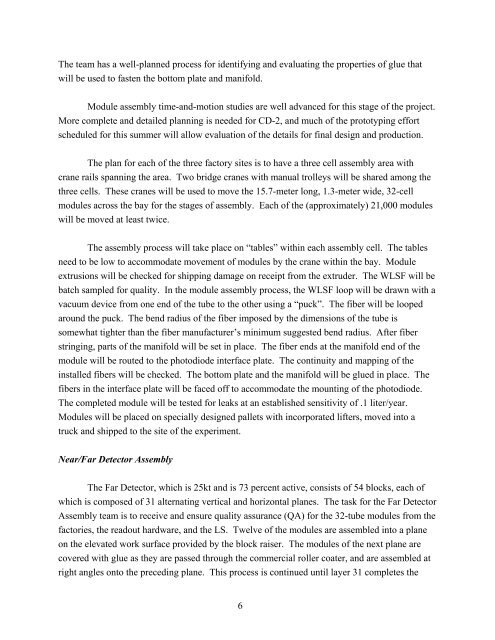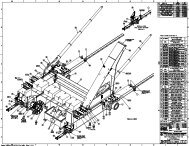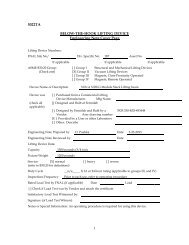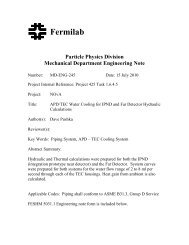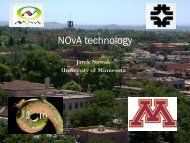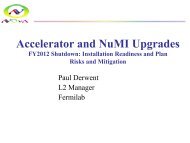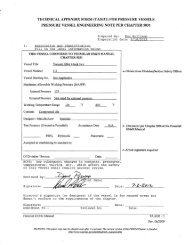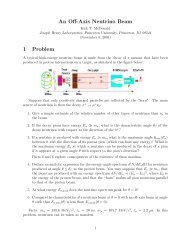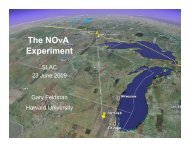NuMi Off-Axis Neutrino Appearance - NOVA Document Database ...
NuMi Off-Axis Neutrino Appearance - NOVA Document Database ...
NuMi Off-Axis Neutrino Appearance - NOVA Document Database ...
Create successful ePaper yourself
Turn your PDF publications into a flip-book with our unique Google optimized e-Paper software.
The team has a well-planned process for identifying and evaluating the properties of glue that<br />
will be used to fasten the bottom plate and manifold.<br />
Module assembly time-and-motion studies are well advanced for this stage of the project.<br />
More complete and detailed planning is needed for CD-2, and much of the prototyping effort<br />
scheduled for this summer will allow evaluation of the details for final design and production.<br />
The plan for each of the three factory sites is to have a three cell assembly area with<br />
crane rails spanning the area. Two bridge cranes with manual trolleys will be shared among the<br />
three cells. These cranes will be used to move the 15.7-meter long, 1.3-meter wide, 32-cell<br />
modules across the bay for the stages of assembly. Each of the (approximately) 21,000 modules<br />
will be moved at least twice.<br />
The assembly process will take place on “tables” within each assembly cell. The tables<br />
need to be low to accommodate movement of modules by the crane within the bay. Module<br />
extrusions will be checked for shipping damage on receipt from the extruder. The WLSF will be<br />
batch sampled for quality. In the module assembly process, the WLSF loop will be drawn with a<br />
vacuum device from one end of the tube to the other using a “puck”. The fiber will be looped<br />
around the puck. The bend radius of the fiber imposed by the dimensions of the tube is<br />
somewhat tighter than the fiber manufacturer’s minimum suggested bend radius. After fiber<br />
stringing, parts of the manifold will be set in place. The fiber ends at the manifold end of the<br />
module will be routed to the photodiode interface plate. The continuity and mapping of the<br />
installed fibers will be checked. The bottom plate and the manifold will be glued in place. The<br />
fibers in the interface plate will be faced off to accommodate the mounting of the photodiode.<br />
The completed module will be tested for leaks at an established sensitivity of .1 liter/year.<br />
Modules will be placed on specially designed pallets with incorporated lifters, moved into a<br />
truck and shipped to the site of the experiment.<br />
Near/Far Detector Assembly<br />
The Far Detector, which is 25kt and is 73 percent active, consists of 54 blocks, each of<br />
which is composed of 31 alternating vertical and horizontal planes. The task for the Far Detector<br />
Assembly team is to receive and ensure quality assurance (QA) for the 32-tube modules from the<br />
factories, the readout hardware, and the LS. Twelve of the modules are assembled into a plane<br />
on the elevated work surface provided by the block raiser. The modules of the next plane are<br />
covered with glue as they are passed through the commercial roller coater, and are assembled at<br />
right angles onto the preceding plane. This process is continued until layer 31 completes the<br />
6


